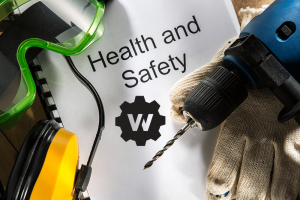The Occupational Safety and Health Administration (OSHA) will host its second and final stakeholder meeting of the summer on Aug. 28, 2017 in New Orleans, LA, in efforts to continue the positive growth of the agency’s Voluntary Protection Program (VPP). The public meeting is set to include a review of the July 17, 2017, meeting, held in Washington, D.C., along with comments and suggestions from the public on potential plans for action.
VPP is an OSHA initiative that promotes effective worksite-based safety and health. In the VPP, management, labor, and OSHA work alongside each other to establish workplace relationships that implement a comprehensive safety and health management system. Approval into VPP is OSHA’s official recognition of the outstanding efforts of employers and employees who have achieved exemplary occupational safety and health.
The VPP sets performance-based criteria for what it deems to be a successful safety and health management system. Worksites can then apply to be assessed by a team of OSHA safety and health experts. If approved, a qualified worksite can be admitted into one of three programs:
Star: Recognition for employers and employees who demonstrate exemplary achievement in the prevention and control of occupational safety and health hazards the development, implementation and continuous improvement of their safety and health management system.
Merit: Recognition for employers and employees who have developed and implemented good safety and health management systems but who must take additional steps to reach Star quality.
Demonstration: Recognition for employers and employees who operate effective safety and health management systems that differ from current VPP requirements. This program enables OSHA to test the efficacy of different approaches.
Benefits of Committing to a Voluntary Protection Program
Records show that the average VPP worksite has a Days Away Restricted or Transferred (DART) case rate of 52% below the average for its industry. Typically, when a worksite first commits to a VPP approach, these rates are much higher.
The congressional groundwork for VPP was set by the Occupational Safety and Health Act of 1970, in which Congress expressed its intent “to assure so far as possible every working man and woman in the Nation safe and healthful working conditions and to preserve our human resources – (1) by encouraging employers and employees in their efforts to reduce the number of occupational safety and health hazards at their places of employment, and to stimulate employers and employees to institute new and to perfect existing programs for providing safe and healthful working conditions.”
“OSHA is seeking to reshape VPP so that it continues to represent safety and health excellence, leverages partner resources, further recognizes the successes of long-term participants, and supports smart program growth,” the agency said in a news release Monday morning.
Asking For Stakeholder Support
Some of the questions for which OSHA invites stakeholder input include:
- What can the agency do to enhance and encourage the efforts of employers, workers and unions to identify and address workplace hazards through the VPP?
- How can the agency support increased participation in VPP while operating with available resources and maintaining the integrity of the program?
- How can the agency modify VPP to enhance the efforts and engagement of long-term VPP participants?
- How might the agency modify Corporate VPP for greater leverage and effectiveness?
- How can the agency further leverage participant resources such as Special Government Employees?
The Voluntary Protection Program meeting will be held 1 to 4 p.m. in Great Hall B of the Ernest N. Morial Convention Center. Those wishing to attend should register by Aug. 23, 2017.
Need heavy metal testing? Contact Worksite Medical today!
Need heavy metal testing? Contact Worksite Medical today!





